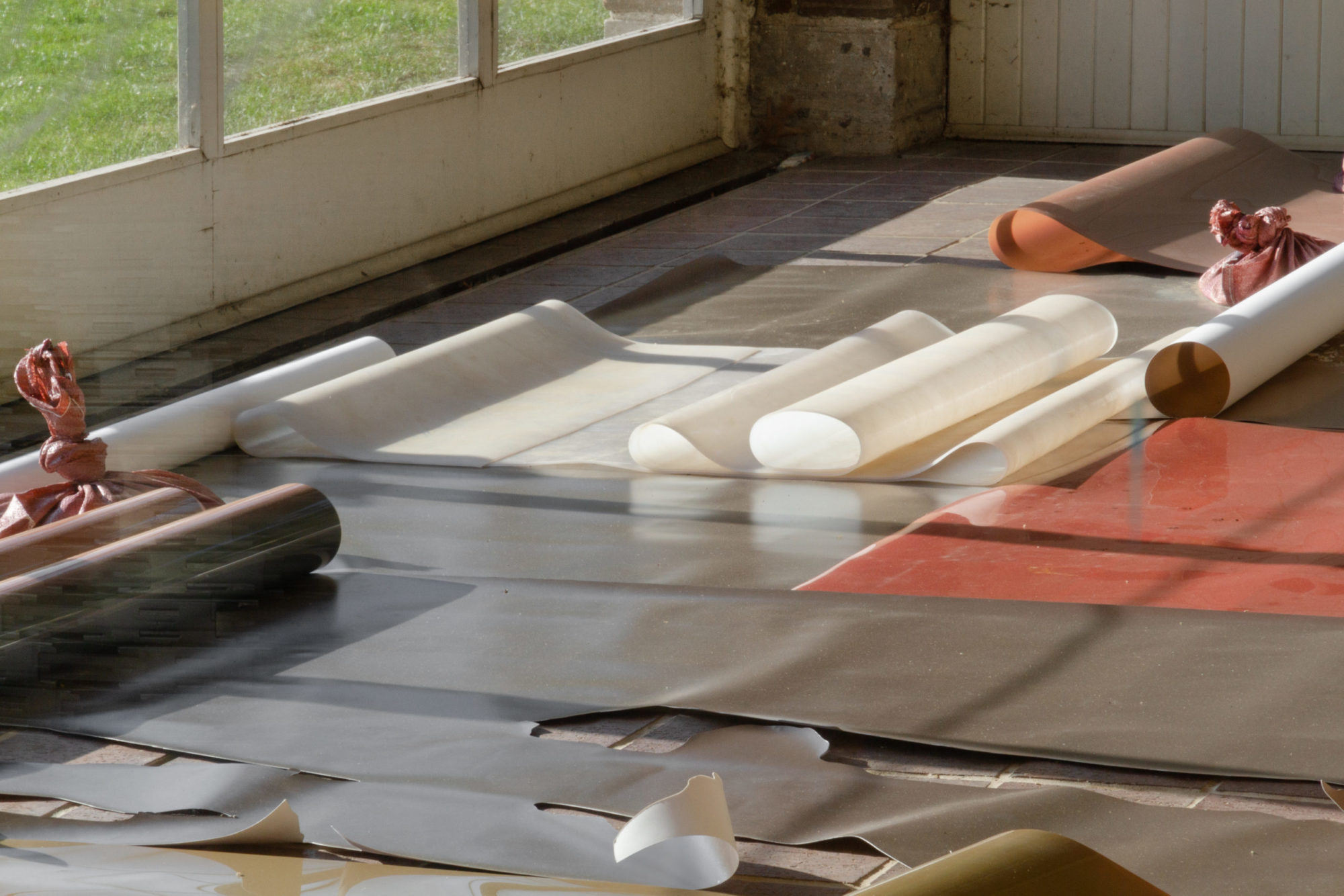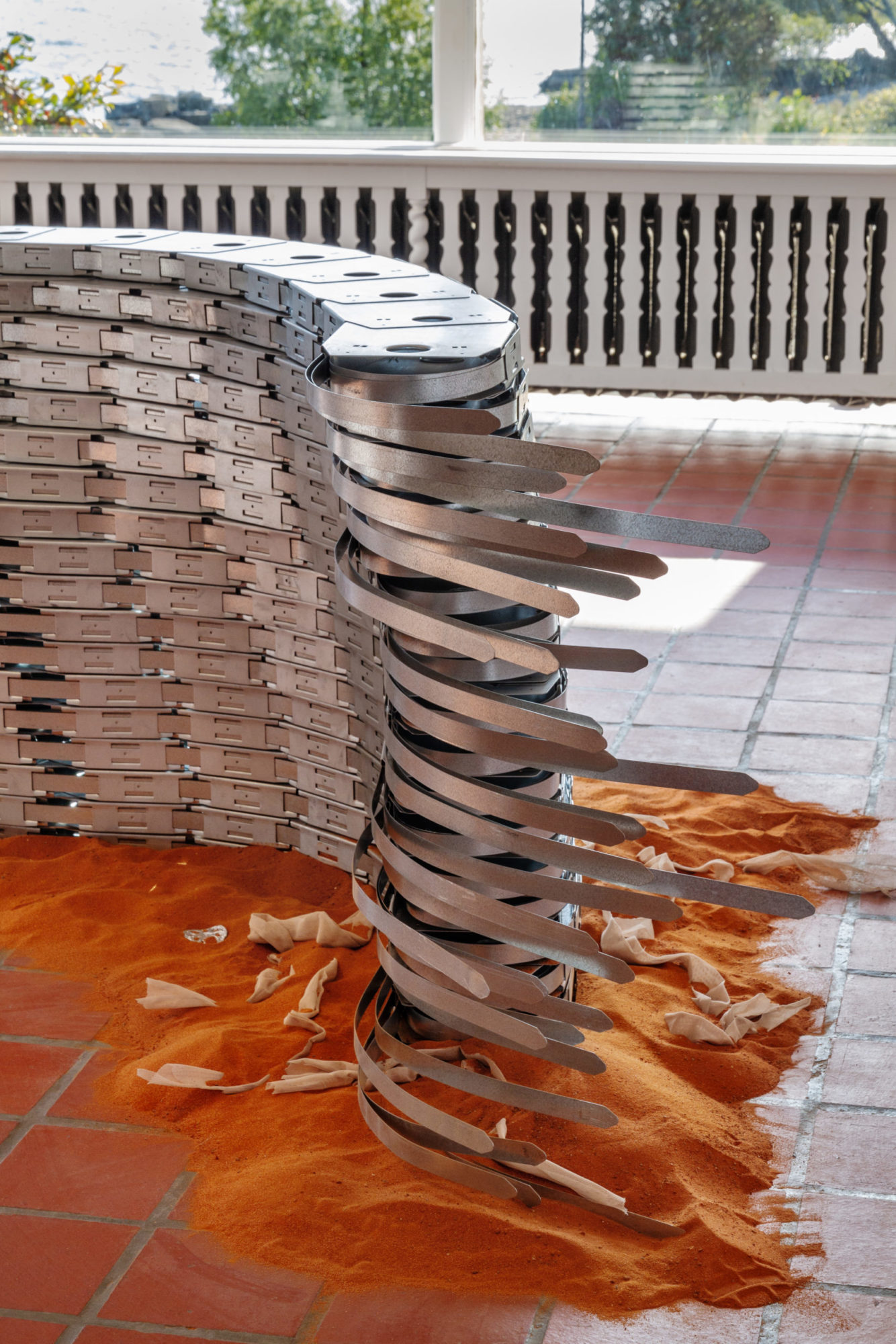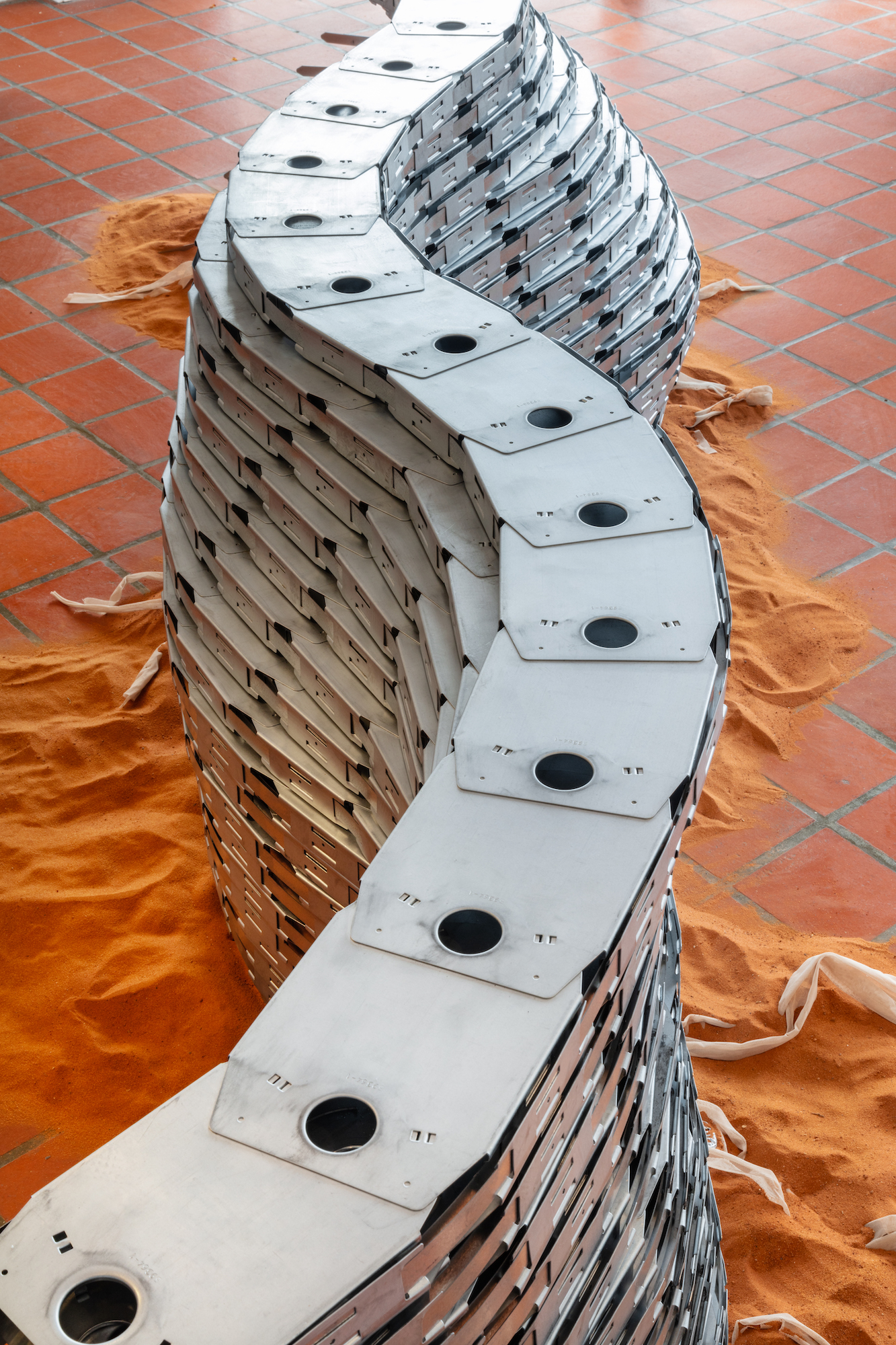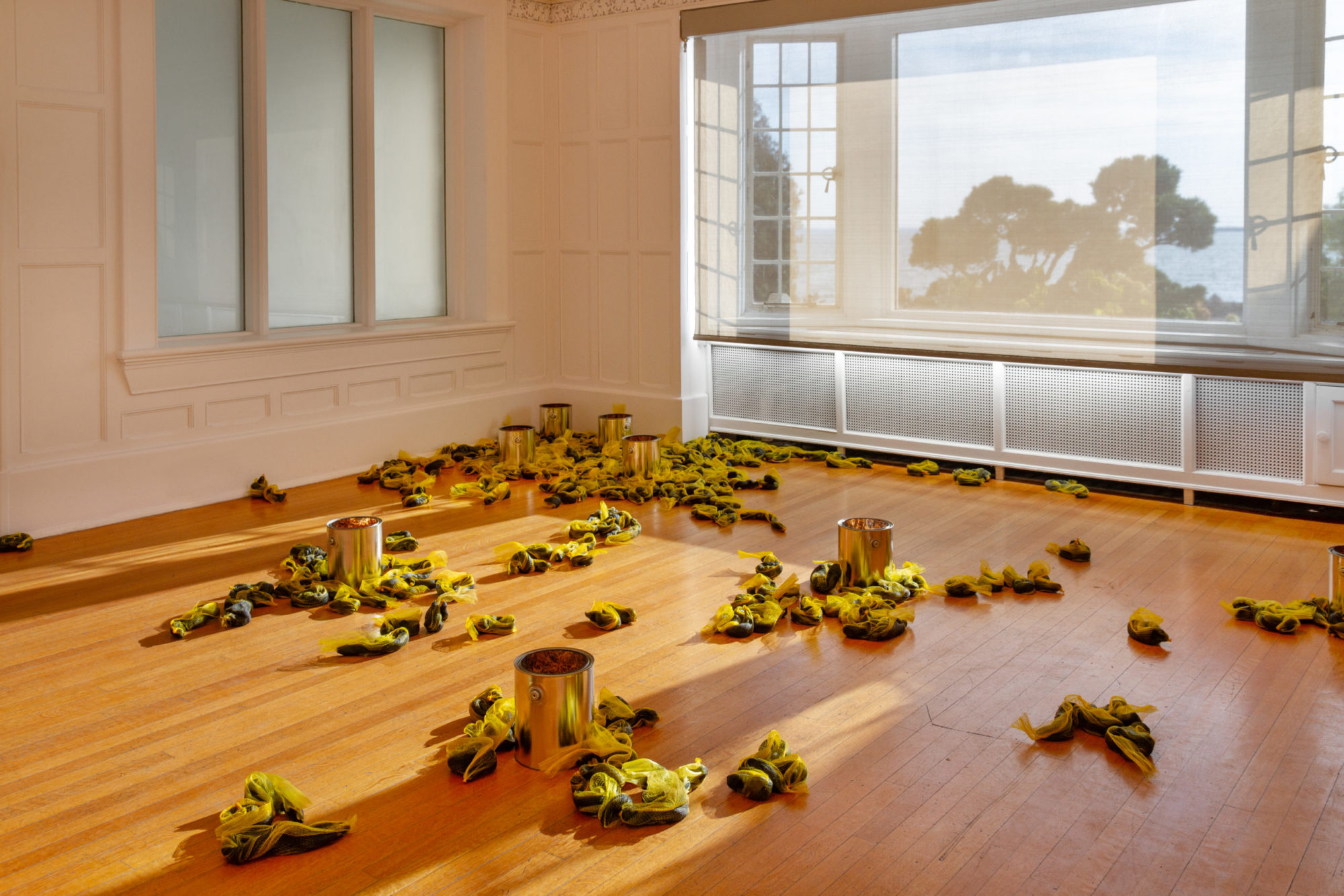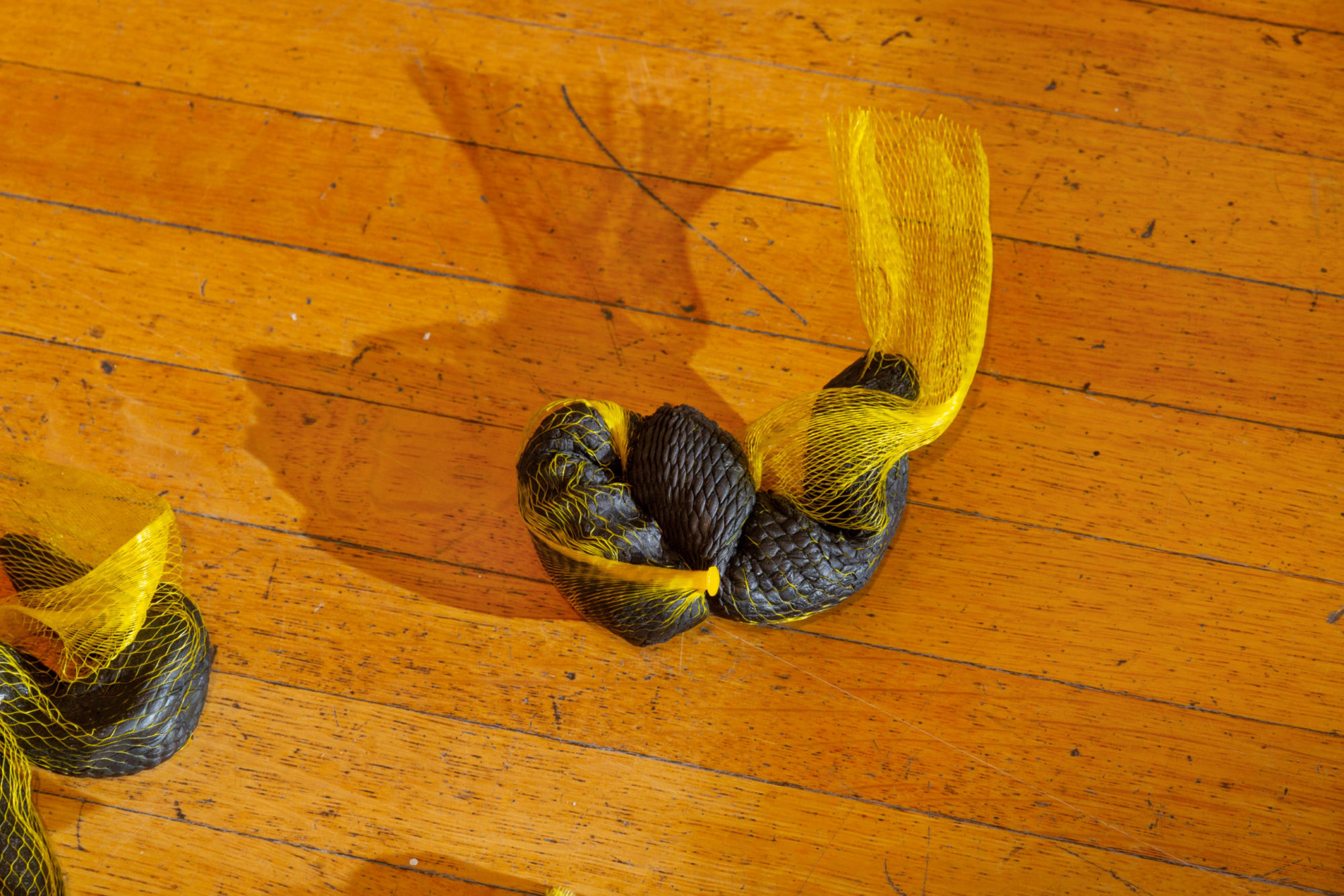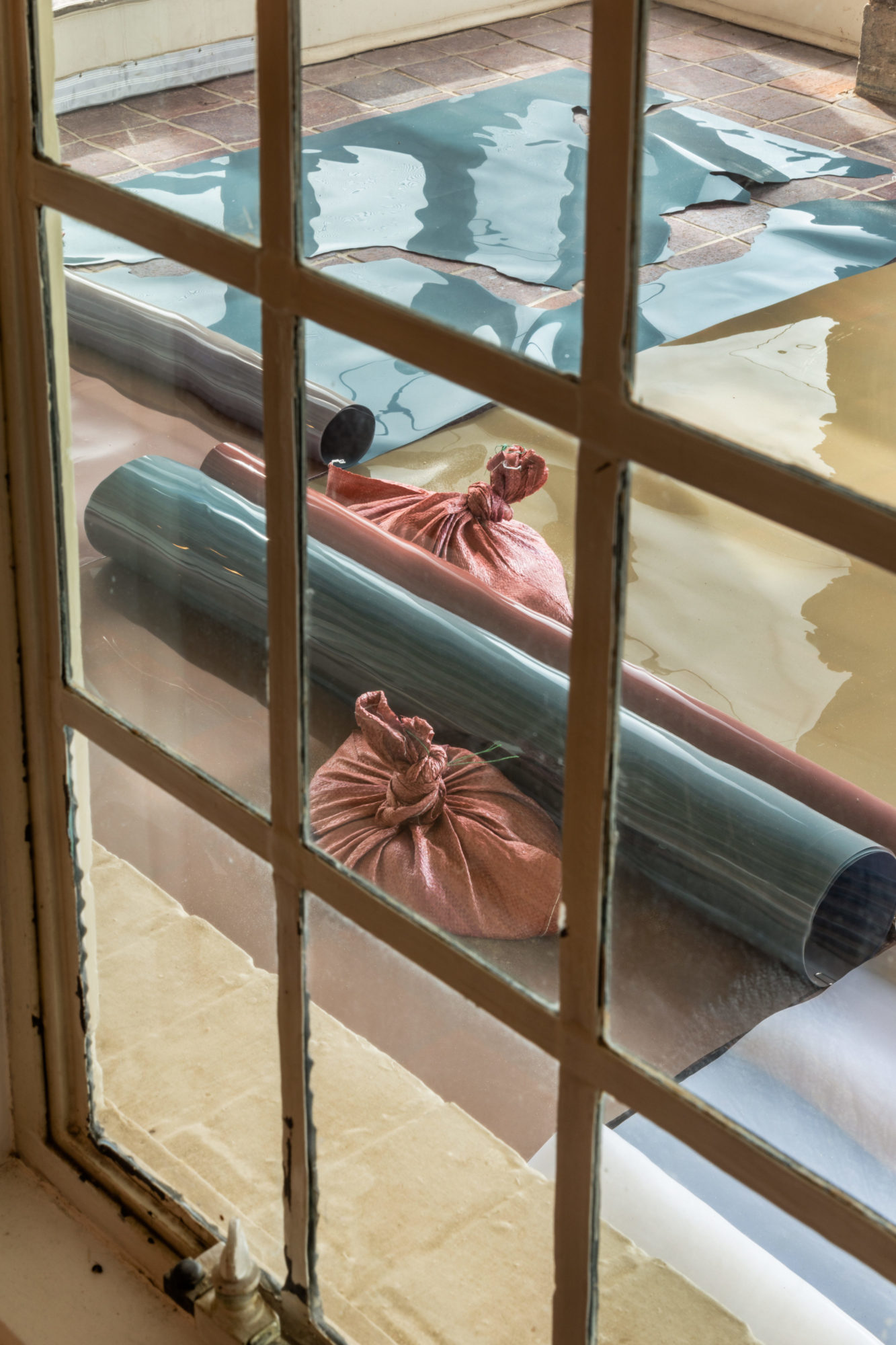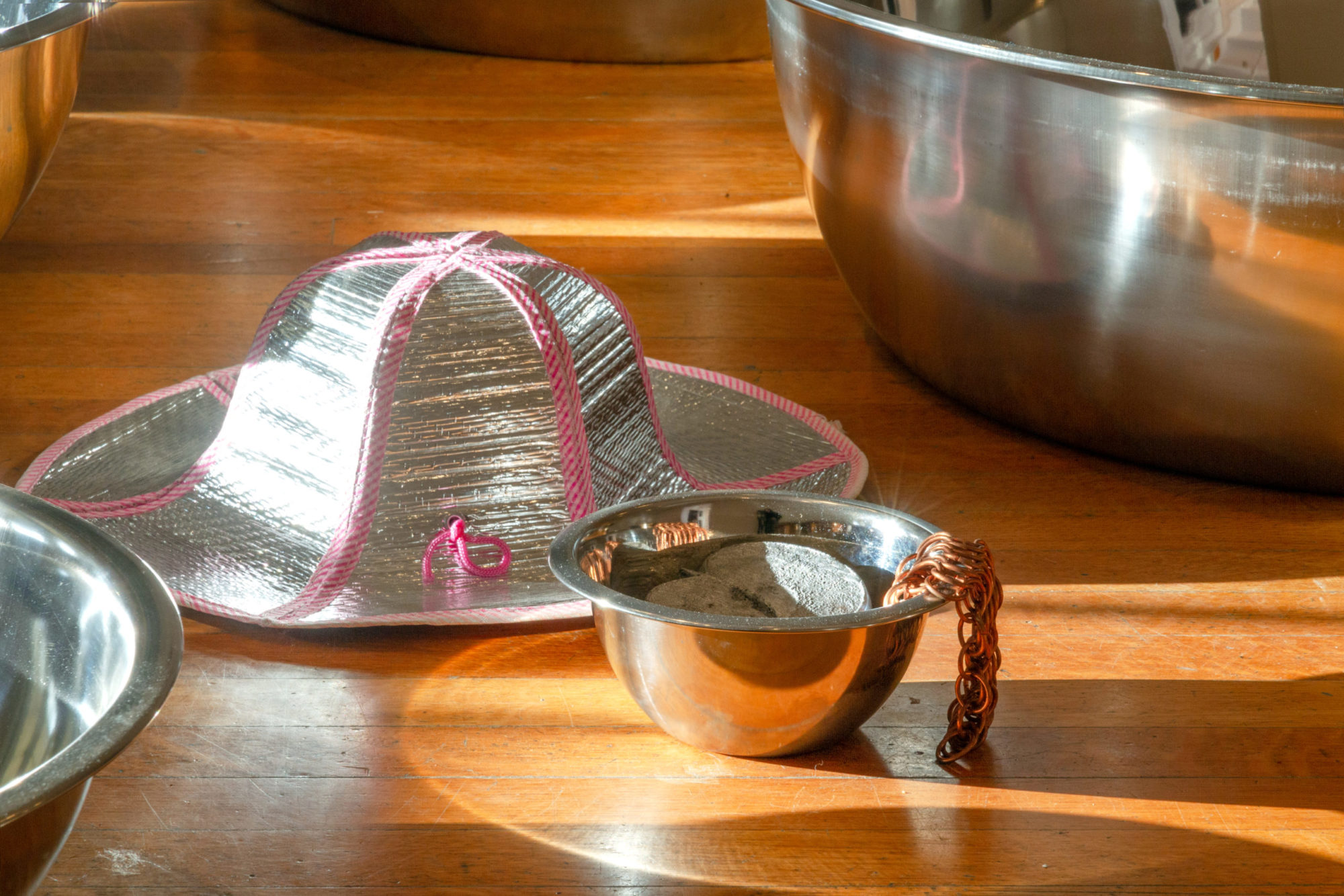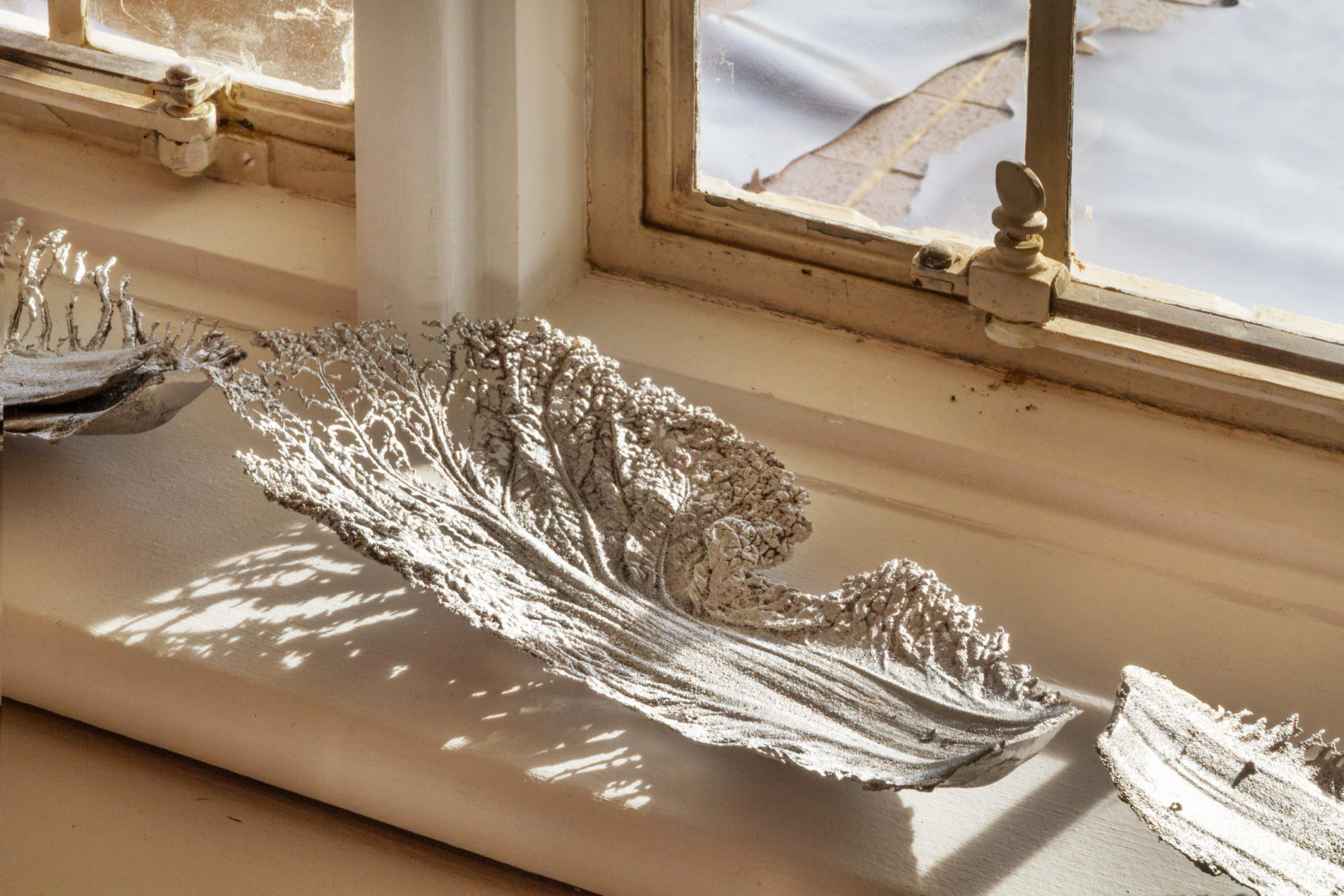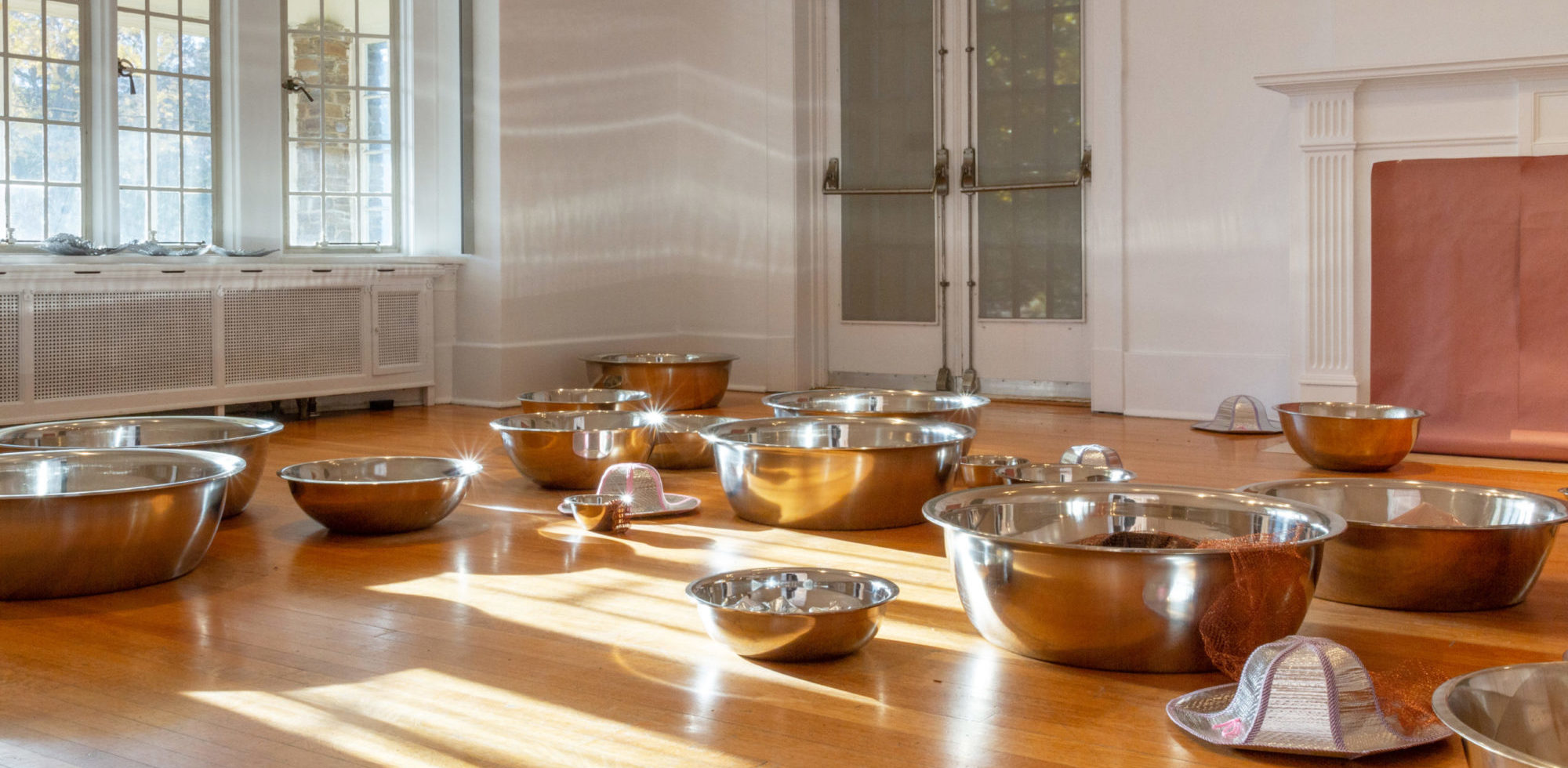
Laurie Kang, Mother, installation detail, 2019, stainless steel bowls, pigmented silicone, rubber, polymer clay, power mesh, paint can, cordyceps fungus, steel machinery, peach pit, lotus seed, pewter, cast aluminum ginseng, cast aluminum cabbage, cast aluminum peach pit, cast aluminum dried lotus root, cast aluminum Asian pears, cast aluminum clay forms, aluminum mesh, sand bag, plastic wrap, copper chainmaille (made by Hanna Hur), reflective foil, plastic bags, copper garden mesh, mung beans, water, dried fish bladder, dried magnolia flowers, dried hibiscus, ground mung and adzuki beans, cast bronze, hats, rosin paper [photo: Laura Findlay; courtesy of Oakville Galleries]
Laurie Kang: Beolle
Share:
Along the floor of the solarium in Oakville Galleries’ Gairloch Gardens lay unrolled, unfixed, and unprocessed photographic paper and films, “continuously sensitive,” as described in the exhibition’s list of media. As Laurie Kang’s exhibition progressed, with daily sunrises and sunsets, the paper and films tanned, brightened, and developed subtle lines from the shadows cast by the window frames. This work, titled Molt (2019), was visually seductive, precisely installed, and entirely precarious. Although the materials were weighed down and held in place with sandbags from Korea, Kang allowed folds, overlaps, and tears in the paper to suggest an unsettled relationship with the floor, which she intentionally left visible. As the breeze filtered through a locked screen door, the paper would stir and shift, a gesture to the phenomenological instability of being in between.
In Beolle, from the Korean word for worm, Kang shrewdly negotiated the unbuilt and the malleable in relation to Gairloch Gardens’ Tudor-style architecture. Each of the installations eschewed an interest in building into the structure itself. According to Kang, the choice to do so was less a refusal and more an interest in floating new directional structures. Her engagement with horizontality spoke to how the works were made (on the ground) and referenced her father’s work in Korea as a worm picker. Kang reflects on his labor through her work Bloom (2019), in which wormlike forms made of clay in mesh bags were strewn on the floor alongside paint cans. These forms cut against the beauty of the space and resembled an infestation, albeit a generative one as indicated by the title. Worms are not merely a biographical reference, as they also are plural organisms that can come apart and work together. Their biological malleability belies the resilience and potential of a counterintuitive structure.
Laurie Kang, Molt, installation detail, 2019, unfixed and unprocessed photographic paper and films (continuously sensitive), sand bags, silicone [photo: Laura Findlay; courtesy of Oakville Galleries]
Kang’s interest in multiplicitous bodies was perhaps most personally explored through her work Mother (2019), an installation of dozens of stainless steel bowls displayed on the floor of the north gallery. The bowls, of a type used to make kimchi, were filled with both organic and inorganic materials. Often the contents reminded Kang of members of her family and were a mix of hardened liquid, lotus roots, clay, and cast aluminum Asian pears. The bowls resemble digestive vessels, as if metabolizing the material representations of diaspora, and paralleling the constant negotiation of identification by diasporic people. Although literal, these materials were not didactic; they indexed their environments without objectifying them. Throughout her work, Kang references Trinh T. Minh-ha’s concept of “speaking nearby,” which focuses on objects as if they are “distant from the speaking subject or absent from the speaking place” and “can come very close to a subject without, however, seizing or claiming it.”1 This representational once-removal was made potent while walking between the bowls and looking into them.
Laurie Kang, Worm, installation detail, flex-c track, sand, power mesh, cast aluminum dried lotus root, cast aluminum shiso leaf [photo: Laura Findlay; courtesy of Oakville Galleries]
Laurie Kang, Worm, installation detail, flex-c track, sand, power mesh, cast aluminum dried lotus root, cast aluminum shiso leaf [photo: Laura Findlay; courtesy of Oakville Galleries]
Kang’s interest in structural reimagining is further teased out through her work Worm (2019), a series of C-tracks stacked on one another and placed in sand; and Knot (2019), large sheets of unfixed photographic paper tied in knots. Both these works display a distinct inversion of form turned inward in relation to the gallery walls. The spines of the sculptures are strong but pliable. The works can bend, come apart, and be repositioned, entirely avoiding calcification or knowability. As a result, they also speak to a larger relationship between structure and parasitic beings. The exhibition text states that Kang’s work “demonstrates [her] parasitic approach to her work—misusing materials, turning forms inside out, and treating her personal and cultural histories as raw material.” Kang herself relates the idea of a parasite with the categorization of the Other; just as the parasite is known in relation to the nonparasite, the “oriental” was created as a negation of the Western occidental. The works in Beolle appeared parasitic in their simultaneous visual difference and assertive presence within the colonial architecture. Their precarity was precisely their form.
Magdalyn Asimakis is a curator and writer based in Toronto. She was recently a curatorial fellow at the Whitney Museum Independent Study Program, and is currently a PhD Student at Queen’s University. She is the co-founder of the collective and roving project space ma ma based in Toronto’s west end. Her writing has appeared in Brooklyn Rail, Artforum, and Canadian Art, as well as museum publications by the Whitney Museum, the New Museum, the Art Gallery of Ontario, and the SFMoMA.
References
| ↑1 | Nancy N. Chen, “Speaking Nearby: A Conversation with Trinh T. Minh-Ha,” Visual Anthropology Review 8, no. 1 (Spring 1992): 87. |
|---|
